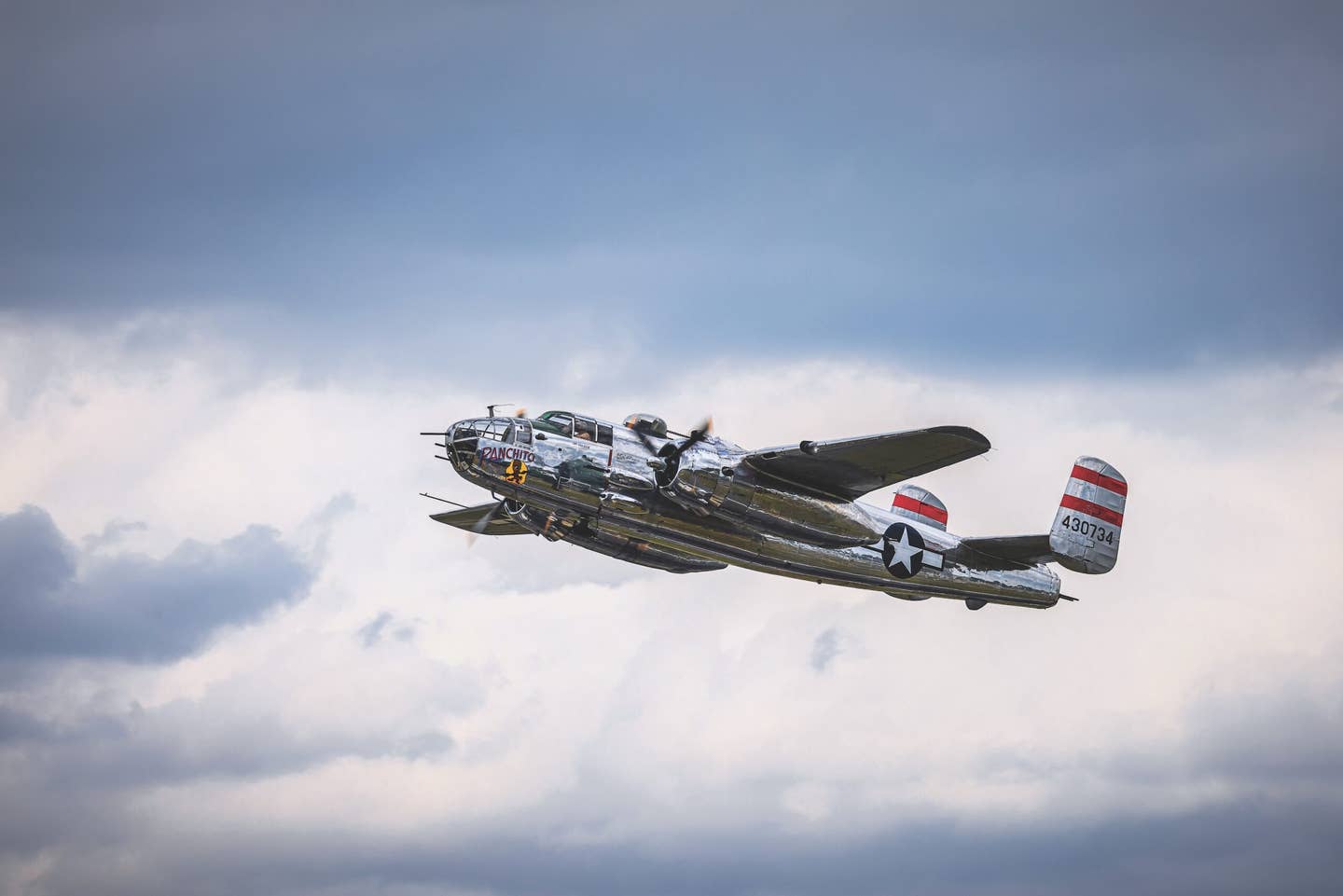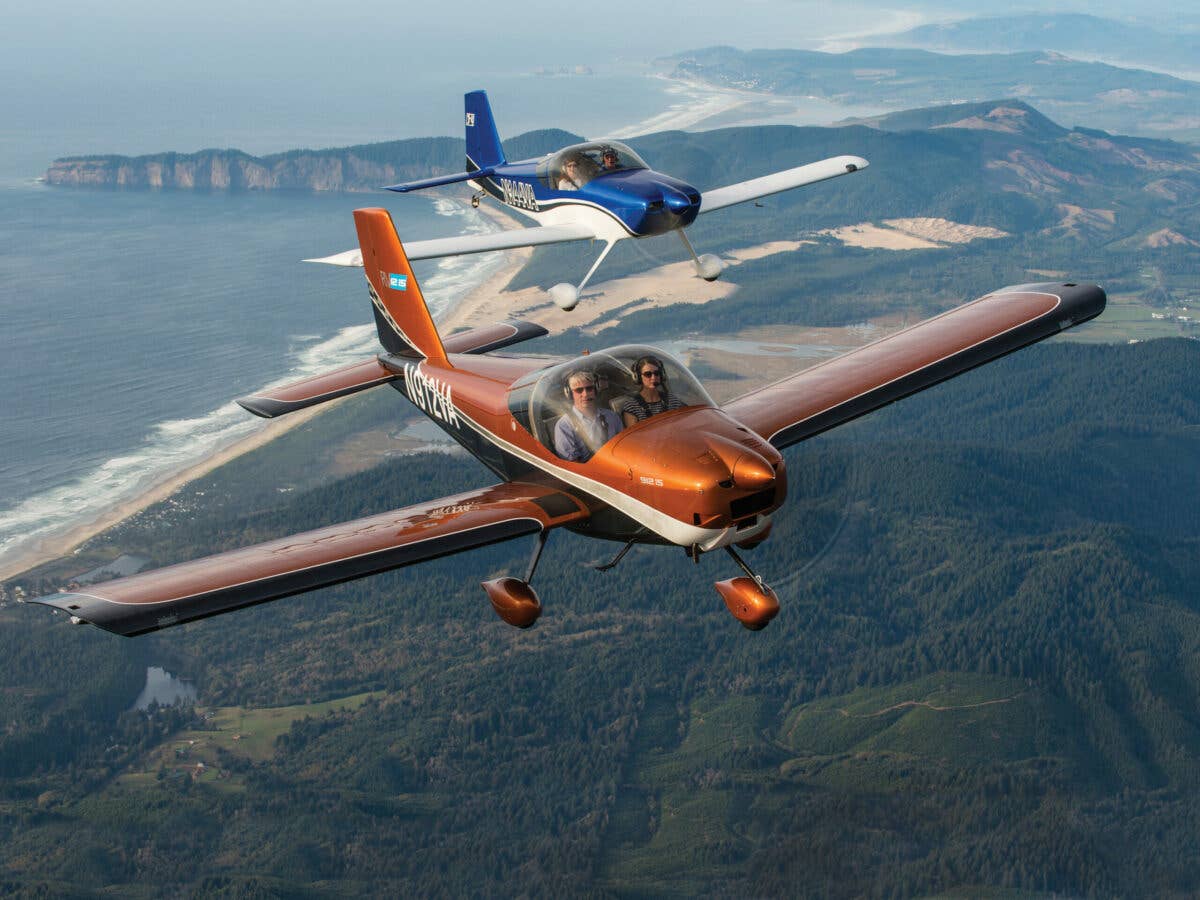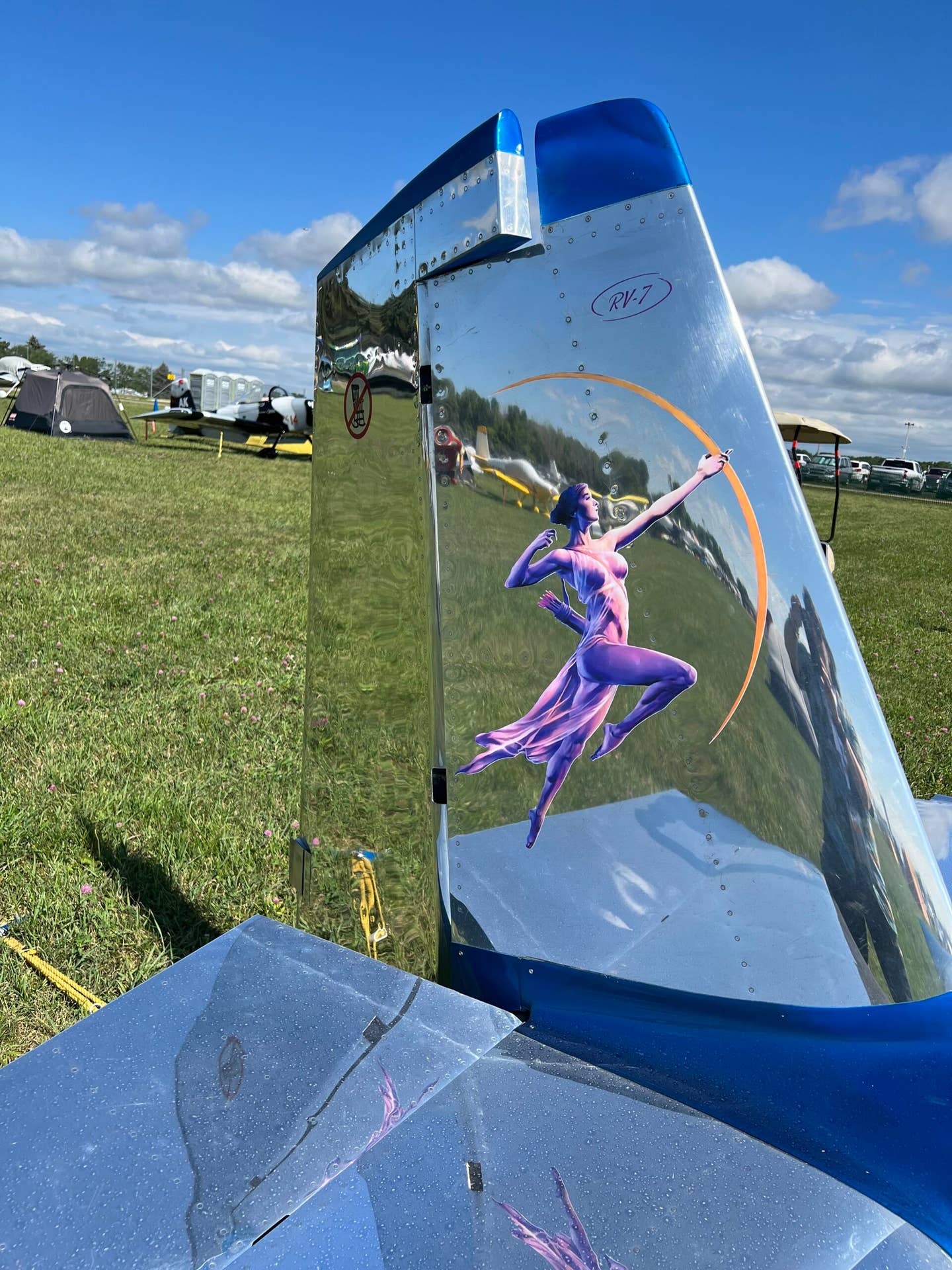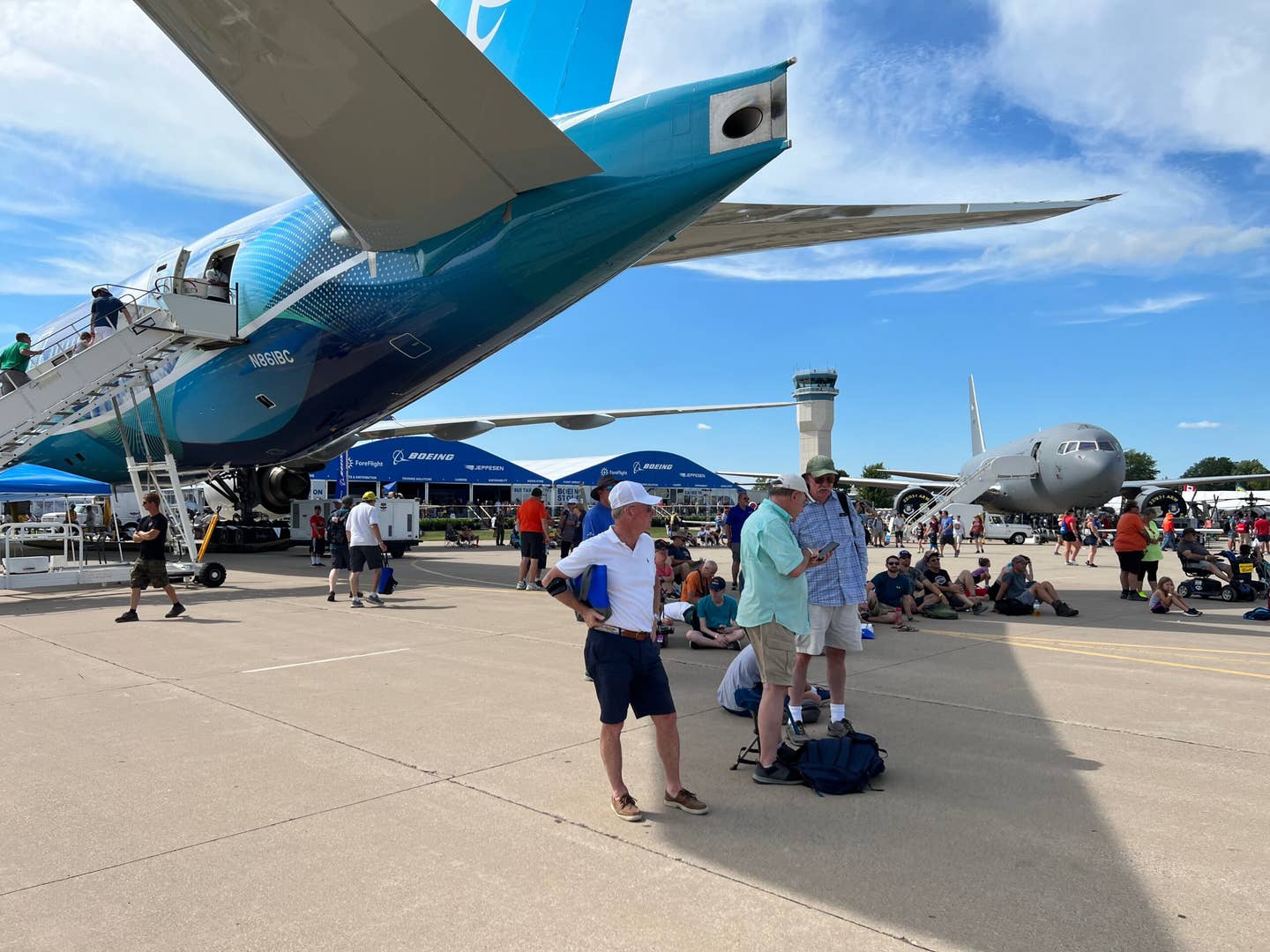A Fond Memory: Sun ‘n Fun Aerospace Expo 2023
There’s something special about about flying your airplane into an airshow or aviation festival. You truly feel accomplished when you fly the published approach, rock your wings on command, stick the landing on the dot specified, and then are greeted by the people on scooters who direct you where to park at the Sun ‘n Fun Aerospace Expo.

Panchito soars through the moody central Florida skies during the Sun ‘n Fun Aerospace Expo’s daily airshow. [Credit: Stephen Yeates]
There is something extra special about flying your airplane into an airshow or aviation festival. You truly feel accomplished when you fly the published approach, rock your wings on command, stick the landing on the dot specified, and then are greeted by the people on scooters who direct you where to park.
That's how it is supposed to go—and often it does go that well, provided you do your homework before you launch for the big event.
If this is your first flight to a given airshow or fly-in, look for a pilot who has made the trip before and is willing to share information. You might even find someone who will make the flight with you.
Pick the route that works best for your aircraft, keeping in mind performance, especially when it comes to climbing over any high terrain on the way. A turbocharged Cessna T182 might not have any trouble, but the pilot of the vintage Taylorcraft might take a longer route that keeps the airplane over lower terrain.
Consider using supplemental oxygen. Though the regs say that the minimum flight crew needs to be on supplemental oxygen at 12,500 feet after 30 minutes, most pilots begin to experience hypoxia at much lower altitudes—sometimes as low as 6,000 feet—so be prepared.
If you're not already a subscriber, what are you waiting for? Subscribe today to get the issue as soon as it is released in either Print or Digital formats.
Subscribe NowKnow how to calculate performance and use the avionics you’re flying with. You don't want to be the pilot randomly pushing buttons to update a flight plan while hurtling through the air.
Be conservative about weight and balance as well as performance. While it is tempting to overload your aircraft by ‘just a little’ with all the gear you want for camping, it can come back to bite you. Remember, the OEM determined the calculations in the POH using a new airplane and a test pilot at the controls.
Have at least two methods for updating your preflight briefing in the air—a tablet and com radio, for example—and always carry a backup handheld radio. If you've never used a payphone (these people walk among us—payphone operation is now part of my curriculum), learn how to use it. There are places that lack cell service but still have a payphone on location, believe it or not.
Pack water and snacks for the trip, and be wary of dehydration and hunger as they make you sleepy. Drink some water before the approach to landing, as water wakes you up—and an alert pilot is a better pilot.
Plan each leg of the flight meticulously. Be careful that get-there-itis does not cloud your judgment. Build in extra days, and ID places to divert to on each leg.
Make sure you are night current and proficient before you begin the journey. There are times when a pilot finds themselves playing “beat the clock” in an aircraft not certified for night flight because the last flight segment went longer than they anticipated.
For navigation, use a combination of digital and analog methods—if the digital goes tango uniform, the paper could save your trip. Make sure both paper and digital materials are current. You do not want to fly with a sectional years out of date and enter Class D airspace thinking it's a Class E airport—only to learn the airport now has a tower.
Be conservative about fuel burn. Make a list of all the airports that have fuel, located along your route and within 20 miles off to each side, just in case.
If you are flying with a copilot or a companion, have a discussion about cockpit duties before you leave the ground. With a copilot, make sure to designate who is the ‘pilot flying’ and who is the pilot monitoring and fielding radio calls and programming avionics.
If they are not a pilot, you can still assign them the task of watching for traffic and dialing in frequencies on the com side.
Airshow NOTAMs
By regulation, specifically FAR 91.103: "Each pilot in command shall, before beginning a flight, become familiar with all available information concerning that flight." This means the pilot needs to know what weather to expect, be familiar with the forecasts, fuel requirements, aircraft takeoff and landing data, weight and balance, alternatives available if the planned flight cannot be completed, and any known traffic delays of which the pilot in command has been advised by ATC. If your intended destination is an airshow or fly-in, this regulation is now on steroids—expect to find a multi- page notice to air missions (NOTAM) released several days before the event.
The larger the fly-in, the larger the NOTAM. Pay special attention to the communication procedures. If the airport is non-towered, it is likely that a temporary control tower will be brought in for the event. The procedures are created to lessen frequency congestion.
Instead of having hundreds of pilots all talking at once, it's often one radio call made over a specific landmark to establish contact. Rock your wings when recognized, then follow instructions for landing.
Most NOTAMs have traffic pattern diagrams imposed on Google Earth images for illustration—it’s easy to see where you should be and where you need to avoid when you have an image to refer to.
Pilots who have flown into airshows before—like Sun ’n Fun Aerospace Expo and EAA AirVenture—recommend having a hard copy of the NOTAM with you in the cockpit along with any digital presentation. Paper doesn't run out of batteries.
Even if you have flown into this particular event before, still study the NOTAM, as they are often adjusted year to year—for example, traffic patterns may be altered to move aircraft away from heavily populated parking areas.
Skills for the Airshow Arrival
Brush up on specialty takeoffs and landings, crosswind approaches, and go-arounds before you head out on the great adventure. You do not want to be rusty flying into an airshow.
There is a maneuver you were probably not taught as a student pilot but you need it to establish communication and many of these events—that is rocking the wings of the aircraft.
It sounds simple enough, but the controllers who ask the airplanes to identify themselves by rocking their wings really want to see you rock those wings. Make that airplane thrash around like a 10-year-old who has had a frog put down their shirt—but don't stall or roll inverted.
Practice approaches, especially short approaches and precision landing technique, because "land on the green dot” means land on the green dot.
Study the airport diagram for the facility and know where you will be expected to park. Usually, airshows have ground marshalers, often people on scooters wearing safety vests with FOLLOW ME on the back.
Remember to watch your wingtips as you taxi, especially when there are lots of people around. Though there may be designated pathways for pe- destrians, some people drift outside of their lanes. You don't want to be the pilot of the Cessna 172 who hits someone in the back of the head with your wing while you taxi, or the guy in the Beechcraft Baron who decides to ignore the ground handlers and taxi into the grass—putting the nosewheel into a gopher hole, resulting in two propeller strikes.
And, in the end, if you are delayed getting to the event, learn from the experience—and realize that it will make a better story to be told around the campfire.

Sign-up for newsletters & special offers!
Get the latest FLYING stories & special offers delivered directly to your inbox







